The Panasonic Z85A is the entry-level OLED model from the Japanese manufacturer, which fully utilises the potential of its panel. Thanks to OLED technology, we can expect phenomenal picture quality at the highest resolution – perfect blacks, excellent contrast, and superb HDR effects, especially after professional calibration. Additionally, it supports a full range of HDR formats, so we can easily choose a film in the best possible quality. Although Panasonic is usually associated with home cinema equipment, the Z85A performs just as well with sports and games. A 120 Hz panel, support for VRR, ALLM, and even functioning Dolby Vision in games guarantee smooth gameplay without any motion blur. The sound also deserves praise – although we won't find an impressive soundbar like in the model Z95A, it is still quite pleasant and has noticeable bass. Downsides? Primarily the Amazon Fire TV – an operating system that still has growing pains. Many popular applications are missing, and some functions are unavailable or poorly translated (e.g. lack of support for external subtitles). Another issue is the not very high brightness, typical of older WOLED panels – this may be a problem in a brightly lit room. Despite these shortcomings, the Panasonic Z85A is a great option for cinema enthusiasts and gamers looking for a versatile television with exceptional picture quality and solid sound. If we can overlook certain limitations of the system and the not-so-high brightness, the Z85A still has a lot to offer. However, if complete user comfort and a richer application ecosystem are crucial for us, then it is worth considering other OLED televisions from competitors as well.
- Matching (Score)
- Our verdict
- TV appearance
- Where to buy
- Contrast and black detail
- HDR effect quality
- Factory color reproduction
- Color reproduction after calibration
- Smoothness of tonal transitions
- Image scaling and smoothness of tonal transitions
- Blur and motion smoothness
- Console compatibility and gaming features
- Input lag
- Compatibility with PC
- Viewing angles
- TV efficiency during daytime
- Details about the matrix
- TV features
- Apps
- Playing files from USB
- Sound
Panasonic Z85A vs Hisense U7Q
Direct compare
U7Q / U78Q

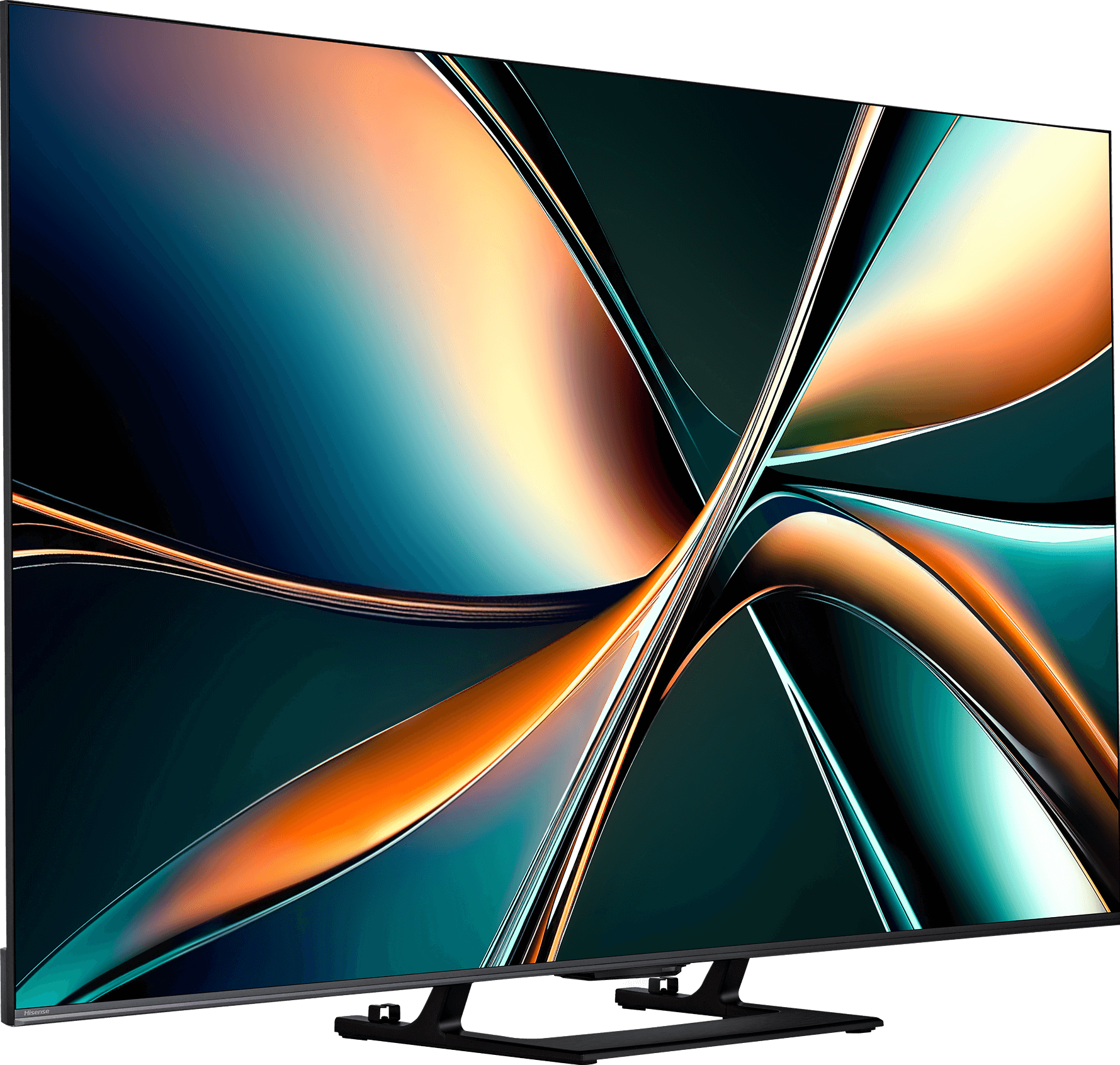
Panel type: WRGB OLED
Resolution: 3840x2160
System: Amazon FireTV
Model year: 2024
Complete the survey to find out the result

Panel type: LCD VA
Resolution: 3840x2160
System: VIDAA
Model year: 2025
Complete the survey to find out the result

Overall rating
7.8
7.2
Movies and series in UHD quality
8.1
6.7
Classic TV, YouTube
8.7
6.8
Sports broadcasts (TV and apps)
8.5
6.5
Gaming on console
9.3
8.0
TV as a computer monitor
7.6
8.6
Watching in bright light
4.8
6.2
Utility functions
7.6
8.9
Apps
7.5
7.7
Sound quality
7.4
7.2
Complete the survey to find out what fits your preferences
Advantages
Perfect black and infinite contrast thanks to the WOLED panel
Great HDR quality with good coverage of the DCI-P3 colour gamut (98%)
Excellent picture quality after professional calibration
Complete HDR package: HDR10, HDR10+, Dolby Vision
Low input lag: 5 ms (120 Hz) and 13 ms (60 Hz)
Support for ALLM, VRR, HGIG and Dolby Vision in games
Very good viewing angles
Smooth motion without smearing thanks to the 120 Hz OLED panel
USB recording capability and PiP feature
AirPlay support
Pleasant sound quality with noticeable bass
Great contrast and deep blacks
Very good fluidity of tonal transitions (close to reference level)
High brightness
Support for 4K 144 Hz and even 240 Hz in Full HD
VRR, ALLM, G-SYNC – a complete package for gamers
Low input lag
Pleasant sound with light bass
Many classic TV features built into the VIDAA system
Disadvantages
SDR brightness at 300 nits – too low for heavily sunlit rooms
Amazon Fire TV system has a limited number of applications
Some system functions are poorly translated into Polish
No support for external subtitles in the USB player
No support for DTS:X audio in the television
No support for HGiG (makes setting HDR on consoles difficult)
Brightness management issues
Poor viewing angles – typical for VA panels
Closed VIDAA system – lack of certain applications
Our verdict
The Hisense U7Q is one of the most interesting Mini-LED televisions in its price segment, clearly demonstrating that Hisense is beginning to make a mark in the market not only through its price-to-performance ratio but also due to its increasingly refined picture quality. Let's start with what truly impresses: the contrast and black levels are at a level that not long ago was unattainable in this price range. Combined with smooth tonal transitions, solid brightness, and a fast 144 Hz panel, the U7Q becomes a television that excels in both movies and gaming. Gamers will find almost everything they could expect here – variable refresh rate (VRR) support, automatic low latency mode (ALLM), very low input lag, and even 240 Hz in Full HD. All of this makes the U7Q compatible with both next-gen consoles and PCs. However, there are some weaker points. With HDR content, one might say: "untapped potential" – you might ask why? The television, due to its algorithms, dims small bright elements or over-emphasises them, which can ruin the viewing experience. There is also a lack of support for HGiG, a feature that would allow for better calibration of the console with the television regarding HDR. In summary, briefly – the Hisense U7Q is a very versatile and complete television that has its imperfections but makes up for them in many key aspects. For gamers, for the occasional movie viewer, for someone looking for good equipment for everyday use – it is one of the most cost-effective offerings in 2025. You just need to know what compromises you are signing up for – and then it will be hard to be disappointed.
TV appearance





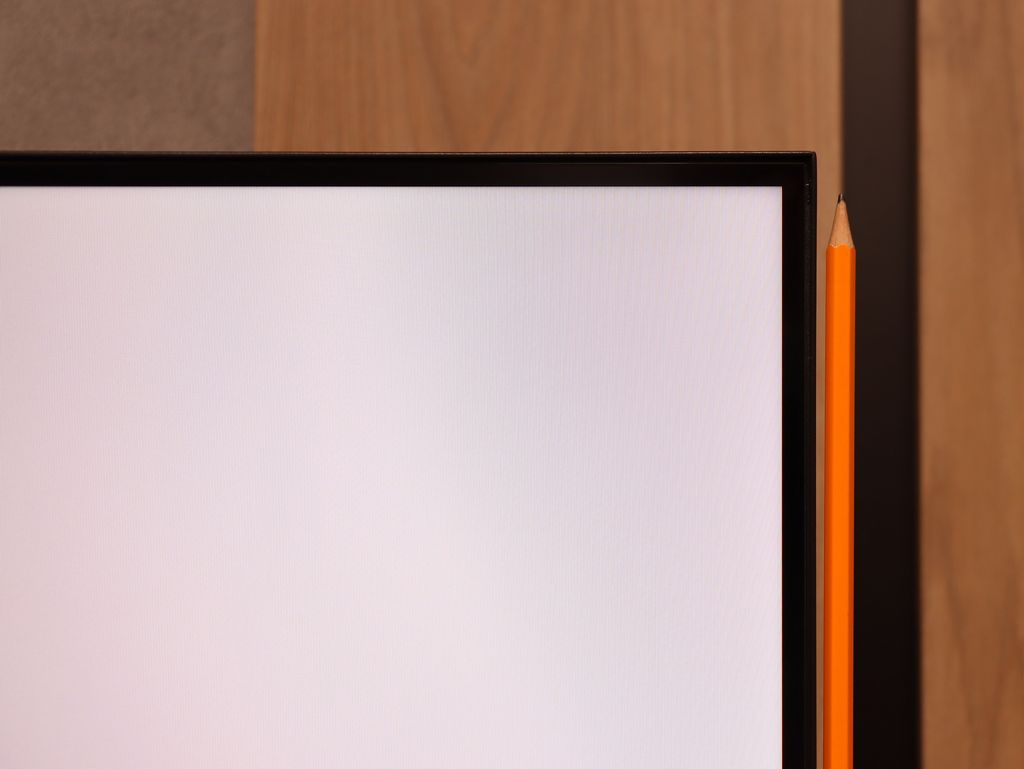
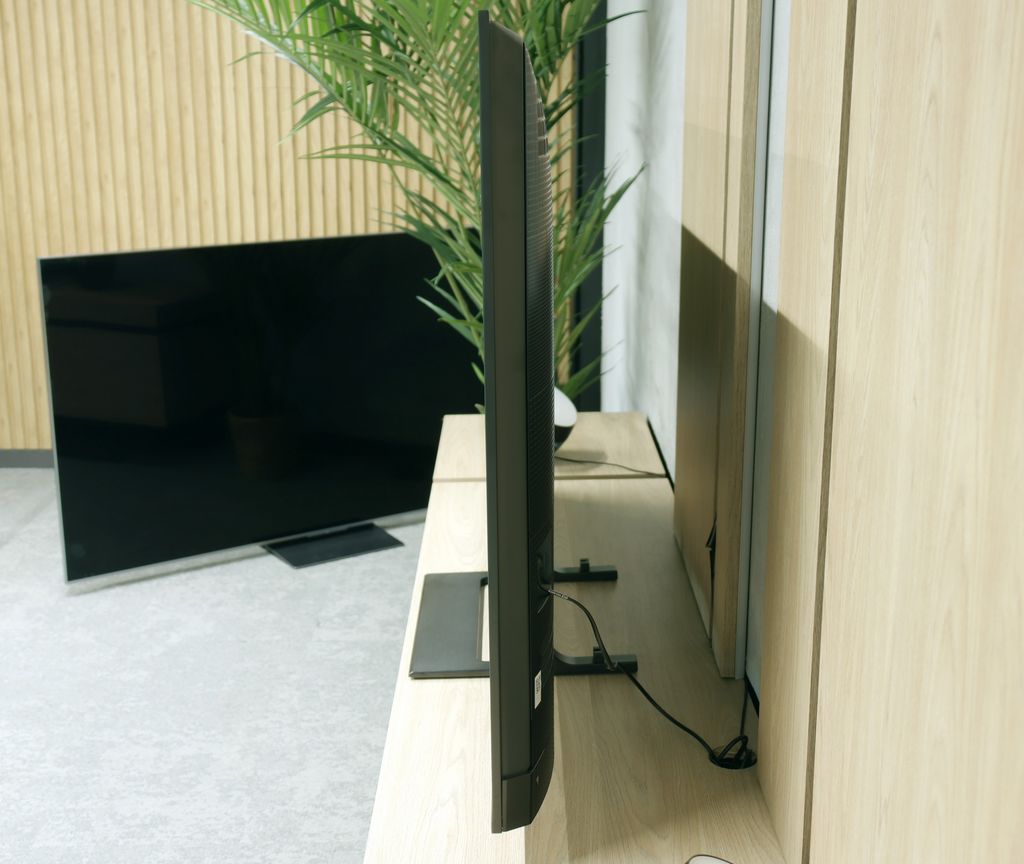
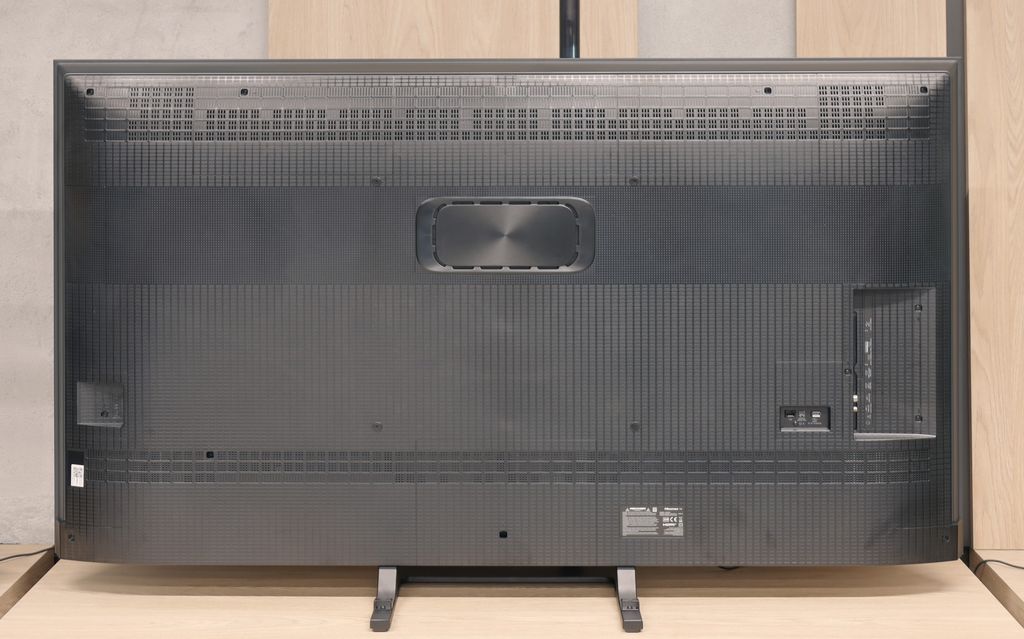
Contrast and black detail
10/10
7.5/10
Local dimming function: Yes, number of zones: 220 (10 x 22)
Contrast:

Result
∞:1

Result
∞:1

Result
∞:1

Result
∞:1

Result
∞:1

Result
278,000:1

Result
28,800:1

Result
11,100:1

Result
10,800:1

Result
6,250:1
Halo effect and black detail visibility:


The Panasonic Z85A uses a WOLED panel, which means one thing – perfect black and infinite contrast. Each pixel lights up and dims independently, so there is no question of any streaks or glow around bright objects on the screen. Even in the most demanding scenes, the image looks simply exemplary. There is no room for compromise in this regard, which is still present even in the most expensive LCD televisions. Here, Panasonic shines, utilising organic technology provided by LG Displays, and does so in truly impressive style.
The U7Q is a television with Mini-LED backlighting – just like the PRO version. The difference? The version without the suffix simply has fewer dimming zones. In our 65-inch model with a VA panel, we counted 220 of them. And although this doesn't make as much of an impression as in the U7Q PRO, it still looks very good on paper for this price range. Alright, but how does it perform in practice? Surprisingly well. The contrast in the U7Q can reach as high as 300,000:1, which gives a really solid black effect. In many scenes, it's hard to find fault – the picture has depth, and the highlights are well separated. Of course, Mini-LED is not OLED – so there are certain limitations. In very challenging scenes with a lot of dark details, the television sometimes either "eats" them, leaving a nice black, or slightly brightens the background, which can cause a halo effect. This is normal in this technology, and one must take it into account. Despite these minor drawbacks – the contrast in the U7Q performs really well.
HDR effect quality
6.4/10
4.6/10
Luminance measurements in HDR:

Result
812 nit

Result
775 nit

Result
812 nit

Result
808 nit

Result
390 nit

Result
521 nit

Result
160 nit

Result
351 nit

Result
98 nit

Result
674 nit
Scene from the movie “Pan” (about 2800 nits)


Scene from the movie “Billy Lynn” (about 1100 nits)


Static HDR10


Dynamic: Dolby Vision
Dynamic: Dolby Vision


HDR luminance chart:
Hisense U7Q
Luminancja HDR
Luminance of RGB colors
Panasonic Z85A
Luminancja HDR
Luminance of RGB colors
The Panasonic Z85A is an OLED television, so one can immediately expect great effects in films. And indeed – our tests have shown that the WOLED panel can achieve around 800 nits of peak brightness in optimal conditions. This is a solid result that performs well in most demanding HDR scenes, allowing viewers to enjoy a dynamic and detail-rich image. However, like any OLED, the Z85A has its limits. In very bright scenes covering the entire screen – such as the final sequence from the film The Meg – the television reduces brightness to around 400 nits. This is standard behaviour for this technology, so if someone plans to watch films in a brightly sunlit living room, it is worth keeping this in mind. The coverage of the DCI-P3 colour gamut at 98% also deserves high praise. Thanks to this, the television reproduces a wide range of colours that stand out with vibrancy and depth, and details in HDR scenes are sharp and precise. In short – the Panasonic Z85A delivers a solid HDR effect that will satisfy any film enthusiast.
Since the algorithms responsible for blacks are performing quite well, we expected a similarly good effect regarding brightness and overall HDR quality. Unfortunately – here we have to disappoint you a bit.
The U7Q is a sufficiently bright television – under the best conditions, it can achieve around 800 nits, which indeed impresses on some scenes, especially in scenes like those from the film The Meg. Bright areas can shine, and the HDR effect is noticeable. The problem arises when there are very small, bright elements on a dark background – for example, in Sicario 2 or in the second scene from the film Life of Pi. In such moments, the dimming algorithms work too aggressively. Yes, the blacks look great then, but the brightest points can almost completely disappear, causing the HDR effect to vanish and the details to be barely visible. It's just the nature of this technology in this price segment.
As a consolation, it's worth mentioning that the U7Q is marketed as QLED (in practice, a PFS layer is used, which works very similarly), and it is indeed capable of displaying a wide colour palette – a DCI-P3 coverage of around 94% is a very good result for this class.
Factory color reproduction
8.4/10
6.3/10


Factory Mode
After calibration
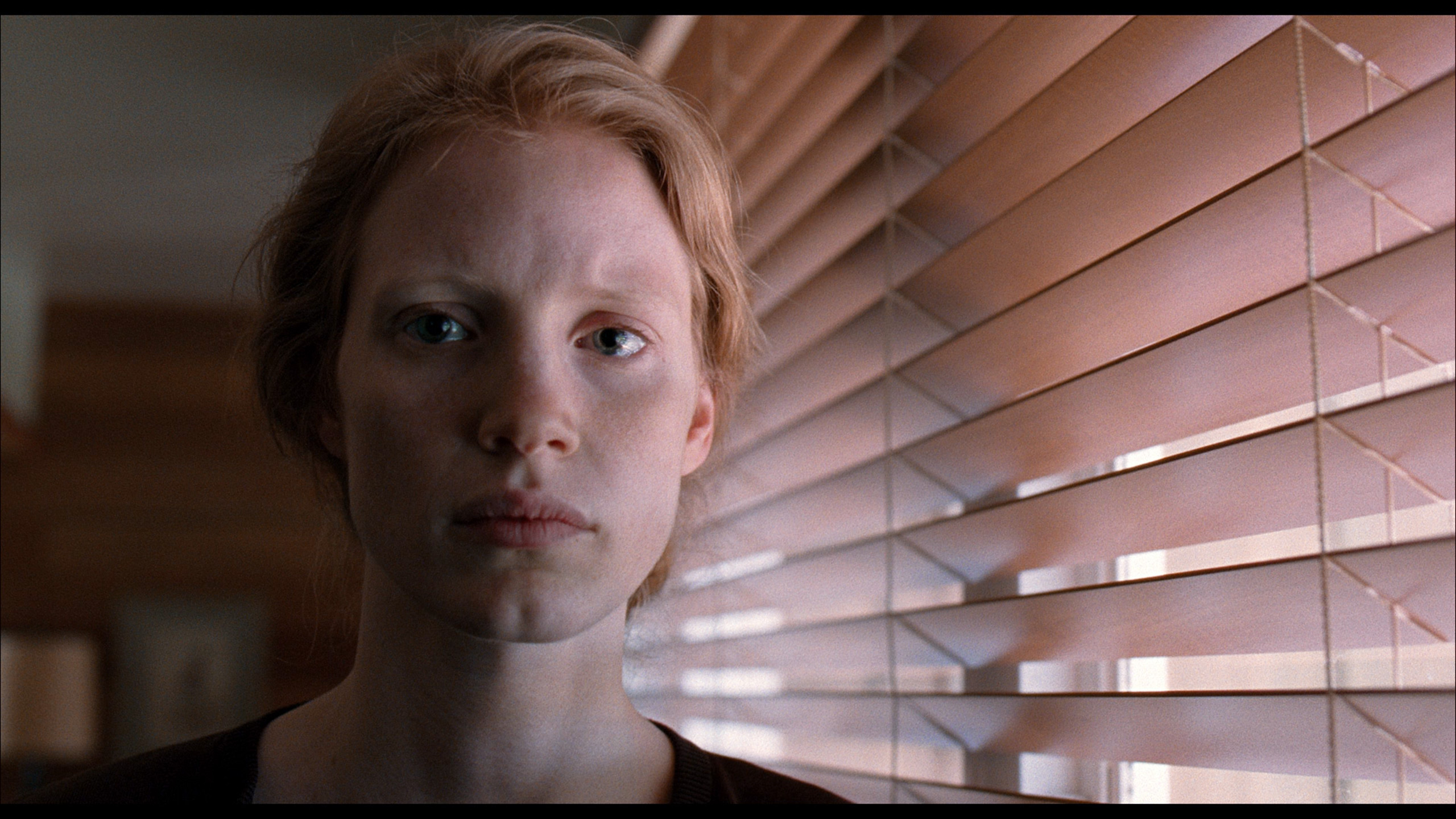
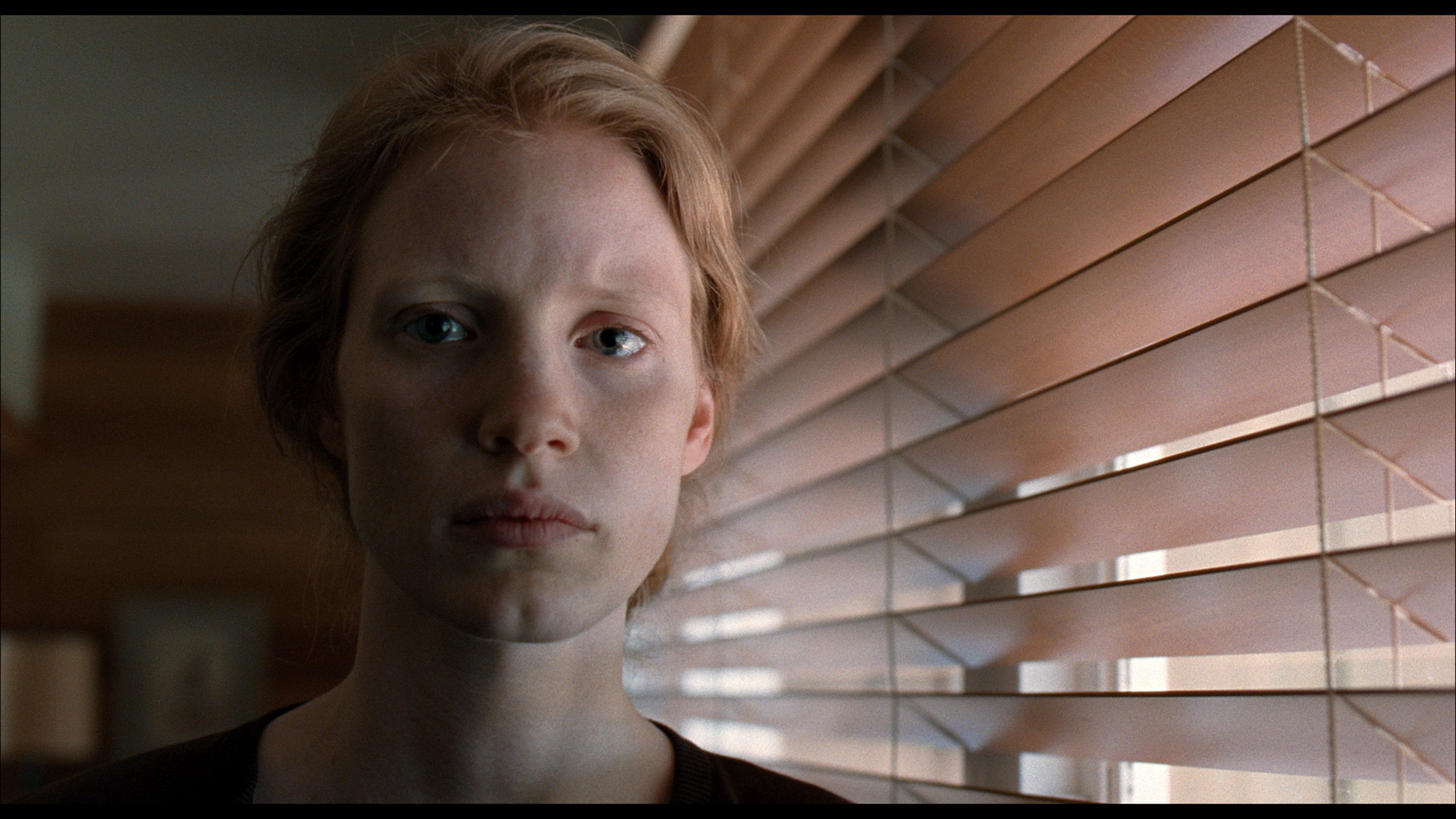
Factory Mode
After calibration
The Panasonic Z85A offers many picture modes, but the Filmmaker mode definitely stands out from the rest. It is rare for a television to be so well tuned straight out of the box, and the unit we had the opportunity to test really surprised us positively.
However, there were a few minor shortcomings. In the SDR signal, we noticed a slight deficit of red and blue, which resulted in the image having a cooler hue than it should have. This is especially noticeable in the comparative photo. Conversely, in 4K HDR content, the situation was the opposite – an excess of red made the image appear warmer than the creators intended. In terms of brightness characteristics (gamma) and the maintenance of the appropriate EOTF curve, it's hard to find fault. There are slight deviations, but they are so minimal that the average viewer is unlikely to notice them.
It is also worth emphasising that our observations pertain to a specific unit of the television. Two identical models may differ from each other due to natural production variances. Nevertheless, the unit we had in our hands looks really solid and deserves praise. Now it's time for our calibration – we'll see if we can extract even more from this screen!
We tested the U7Q in the best possible picture mode, which is Filmmaker Mode. This is the mode that is supposed to provide the most "filmic" and creator-intended experience – right out of the box. Unfortunately… even this professionally sounding name does not guarantee a perfect picture.
In our unit, the problem lay in the incorrectly set white balance. Both in HD and 4K content, the picture had too much blue and red, which caused the screen to take on a slightly rosy tint. It didn't look terrible, but it was noticeable – especially in bright scenes and white backgrounds. This alone could perhaps be forgiven, but the biggest problem is managing brightness in HDR content. The EOTF curve from measurements confirms what we saw earlier during scene tests: the television can overly darken the smallest bright elements, causing them to nearly disappear, or on the contrary – excessively brighten the brightest ones, which affects the naturalness of the picture.
Color reproduction after calibration
9.4/10
7.4/10




The Panasonic Z85A offers truly wide possibilities when it comes to image settings, so we enthusiastically set about calibration. Although we mainly focused on correcting the white balance, the final result exceeded our expectations. Both HD and 4K HDR content now display nearly perfect colour reproduction, with minimal errors that are hard to catch with the naked eye. Well-calibrated televisions are a rarity, and we must admit – it is truly gratifying. Although the gamma and EOTF curve did not require drastic adjustments, it was possible to further stabilise their characteristics across the entire brightness range. After calibration, the Panasonic Z85A is a true gem for home cinema enthusiasts. The image is precise, the colours are natural, and every scene looks exactly as the director intended.
Thanks to specialised tools, we managed to correct the colour quality in SDR content to nearly perfection. In materials with lower dynamic range, the delta E errors dropped below 0.5, which can be regarded as an almost reference result. The picture on television, YouTube, or classic Full HD looks really very good after calibration. Alright – but where did we not manage to improve the image so easily? Primarily, it concerns HDR quality content. Although we managed to somewhat 'tame' the white balance and eliminate pink tints in most scenes, unfortunately, we no longer had full control over brightness management. We set the local dimming settings according to the best observations – SDR: Medium, HDR: High – but the U7Q still did everything a bit its own way. There were still cases of excessive dimming or brightening of details that calibration simply could not eliminate. And although the overall reception of the content is significantly better, one must reckon that the U7Q will always have something to say at the end with an 'but'.
Smoothness of tonal transitions
7.5/10
9.9/10

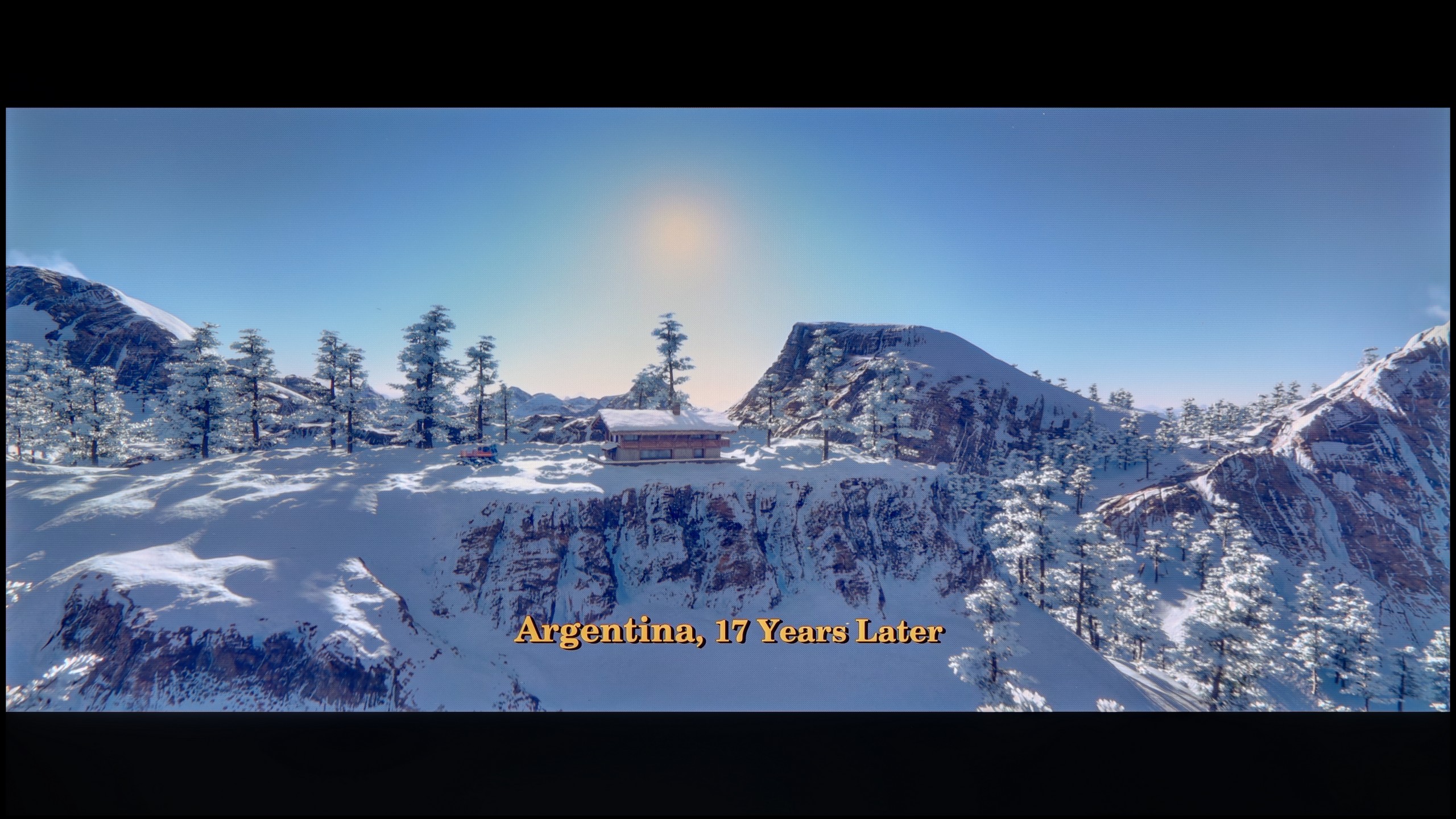



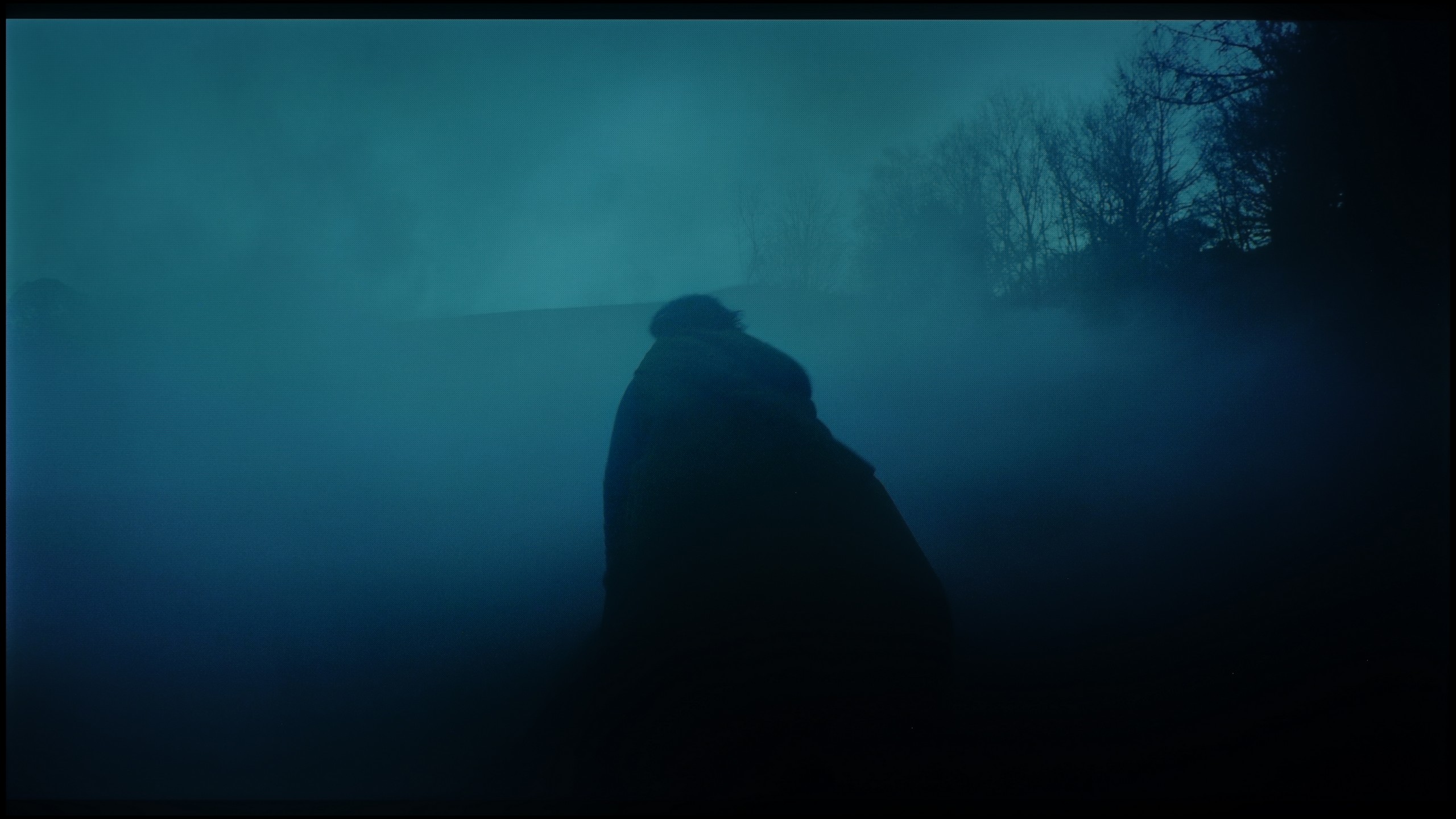






The Panasonic Z85A handles the smoothness of tonal transitions really well. Colours blend together naturally, without noticeable artefacts or visible banding. However, in brighter scenes, such as the opening sequence in the film Kingsman, minor imperfections can be discerned. This is typical of WOLED panels, which have their limitations compared to Samsung Display's QD-OLED designs due to the use of white sub-pixels. The differences are not colossal, but a trained eye will pick them up, especially in more demanding scenes with subtle colour gradients. Despite these minor reservations, the Z85A offers a level that will satisfy the overwhelming majority of users. Tonal transitions are smooth, and the image maintains consistency even in complex scenes. This is a solid result, which in practice will rarely be a hindrance during everyday viewing of films or series.
The U7Q performs remarkably well when it comes to tonal transitions – we can confidently say that it is at an almost reference level, which is why this television receives one of the highest possible ratings in this category from us. Colour blending is smooth, clean, and without visible bands. In the majority of scenes, everything looks simply perfect, and any minor imperfections may only appear in very specific shots – although we hardly noticed any during our tests.
Image scaling and smoothness of tonal transitions
7.4/10
6/10
Smooth transition function

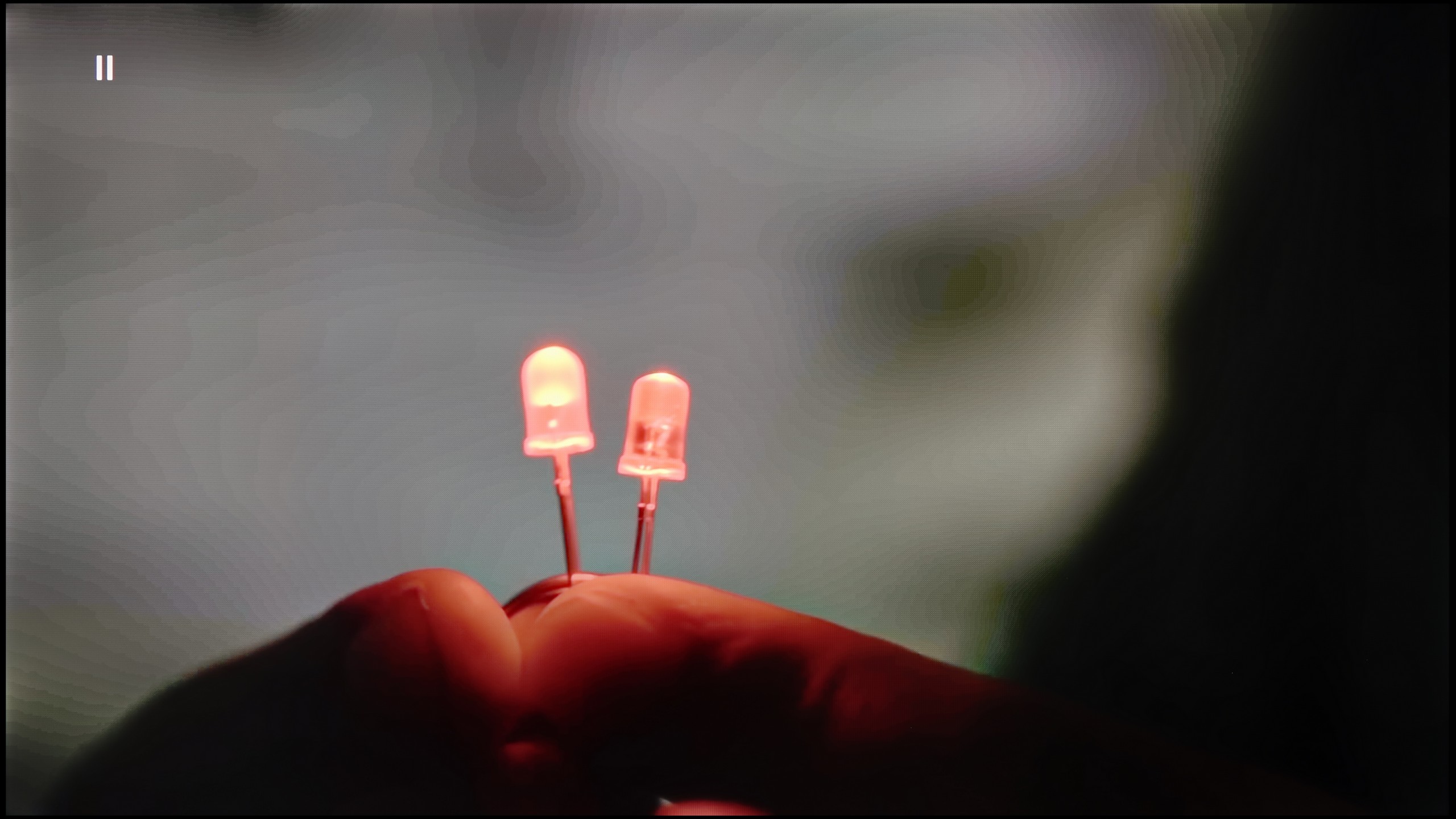
Image without overscan on the SD signal


Now that we know how the Panasonic Z85A performs with tonal transitions in 4K content, it’s time to take a look at its "Gradation Smoothing" feature. It works, but unfortunately not entirely effectively. Regardless of the chosen value – whether it’s low, medium, or high – we were unable to achieve perfectly smooth tonal transitions in our test sequence. We recommend setting this feature to an intermediate level. Although it may slightly blur fine details, at least the issue of film grain loss does not occur, which for many viewers can be crucial when watching classic productions.
As for image scaling, the television performs quite well. It’s noticeable that the image is slightly sharpened, and slim lines may at times appear a bit jagged. However, this is standard in most TVs, and fortunately, it can be adjusted using the sharpness slider. This gives us complete control – we can achieve a more plastic, blurred image or a clearer one, although it may be more “harsh” and artificially sharp. It all depends on user preference and the type of content we are watching. Overall, the scaling is at a solid level and should satisfy most users who are using lower resolution materials.
There are situations where we would like to smooth out tonal transitions a bit, especially in older materials – those with limited source quality. The U7Q is equipped with a feature called "Smooth and Gradient Image," but unfortunately... it works very poorly. In the "Low" option, the effects are practically unnoticeable, and other settings smooth details but do not improve tonal transitions. The only positive aspect is that the feature does not interfere with film grain, so it does not ruin the natural structure of the image.
Fortunately, upscaling content performs quite well. The image is not excessively sharpened, and there is no artificial clarity – and although it is known that this is not the level of high-end televisions, the U7Q handles displaying really old content in a completely acceptable manner without any issues.
Blur and motion smoothness
8.5/10
7.5/10


Blur (native resolution, maximum refresh rate):




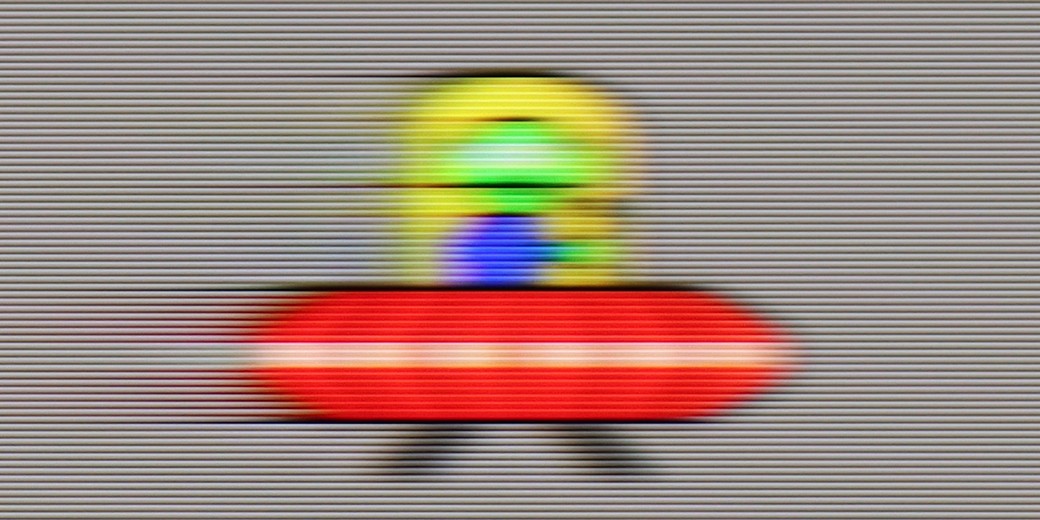
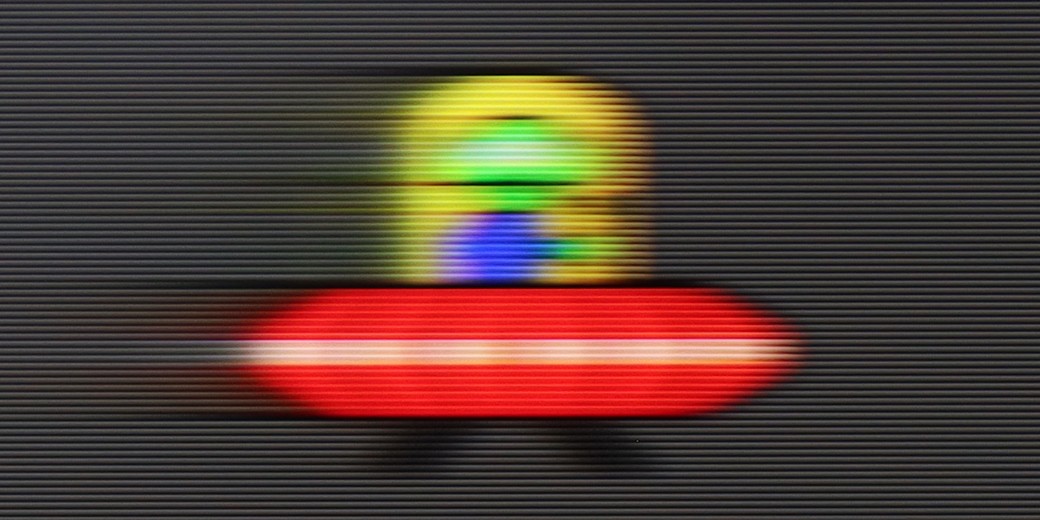
Blur (BFI function enabled):
Image flickers in this mode



Smużenie ():
Smużenie (1080p 240Hz):

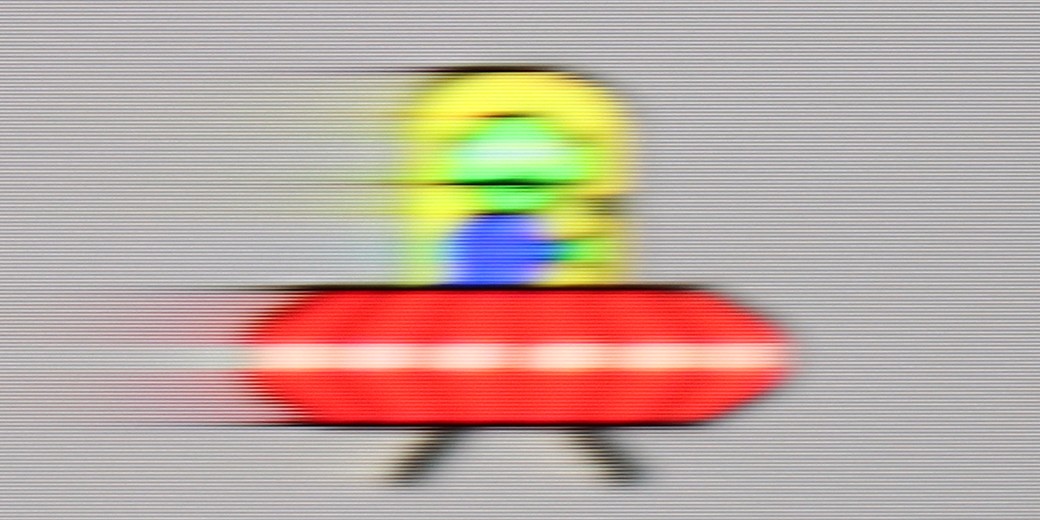

The Panasonic Z85A features a 120 Hz panel, which will certainly please both gamers and sports fans. Admittedly, it is not 144 Hz like some gaming TVs, but in practice, the difference is really hard to notice. In games, the image is stable and clear, and during fast action, there is no sign of any blurring. The same applies to sports – a fast-running footballer or a dynamic car manoeuvre looks smooth and natural. The TV also has the “Intelligent Frame Creation” function, which is a motion smoother. There are two sliders here – one is for reducing blur, and the other is for motion smoothness. With these, you can adjust the image to your own preferences – whether it be more of a cinematic effect with gentle transitions between frames, or a maximally smooth image ideal for watching sports.
U7Q is indeed a very fast television, just like its more powerful version "PRO". At a resolution of 4K, it supports up to 144 Hz refresh rate, and if someone wants even more – in Full HD, you can achieve up to 240 Hz! This will mainly benefit PC gamers, but it is worth appreciating – it is a rarely seen feature in this price segment. Right from the start, it is clear that the U7Q has been designed with dynamic content in mind, such as games or sport. In films, we are not left "out in the cold" either – the U7Q offers an "Ultra Motion Smoothness" feature, where using two sliders you can adjust whether you prefer a smoother, theatrical image or something closer to a cinematic style with a visible film frame. It is good that, as with most manufacturers, we have a choice here as well and can adjust it to our own preferences.
Console compatibility and gaming features
10/10
8.5/10
- ALLM
- VRR
- VRR range40 - 120Hz48 - 240Hz
- Dolby Vision Game Mode
- Correct implementation of HGIG
- 1080p@120Hz
- 1440p@120Hz
- 4K@120Hz
- Game bar



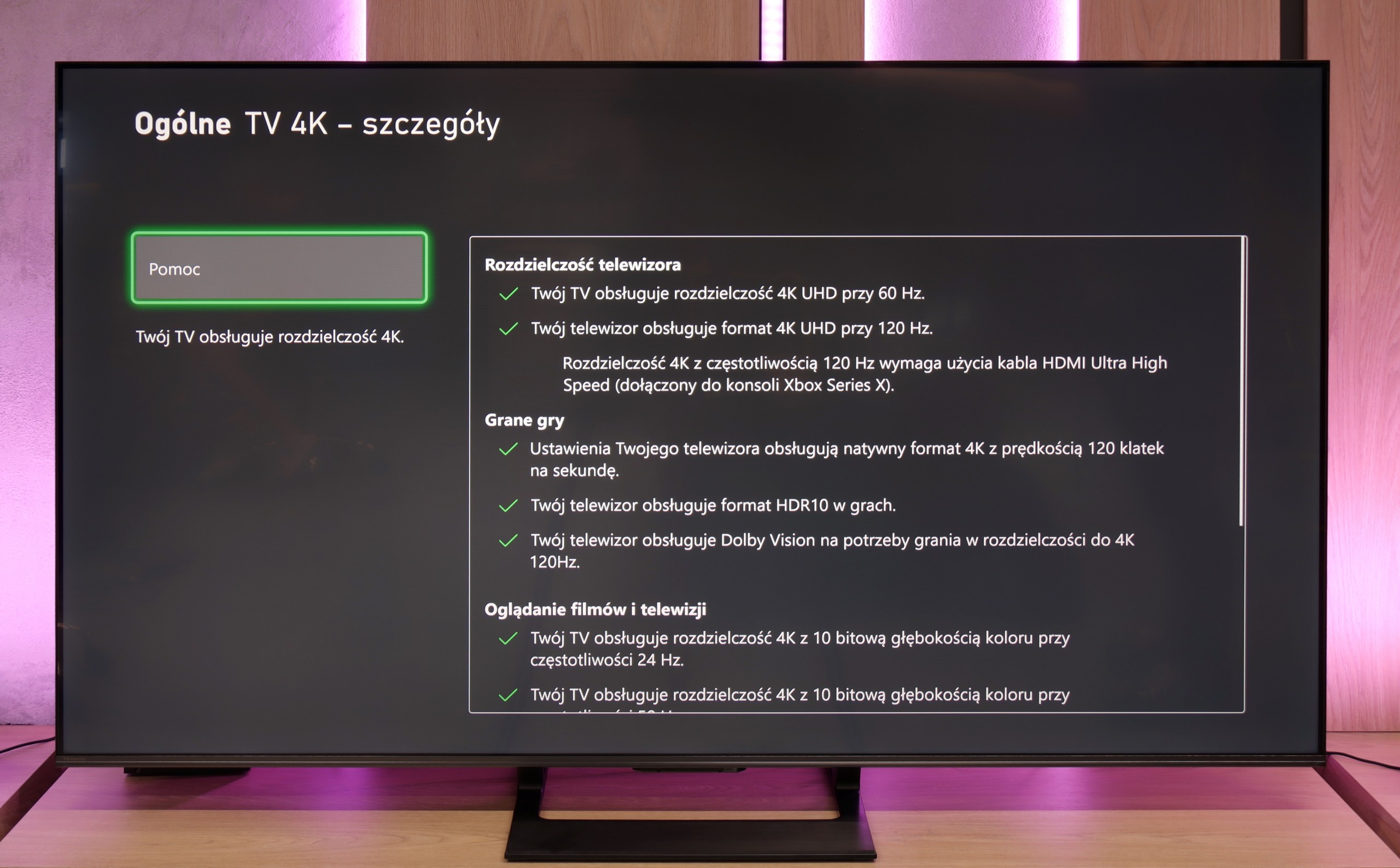



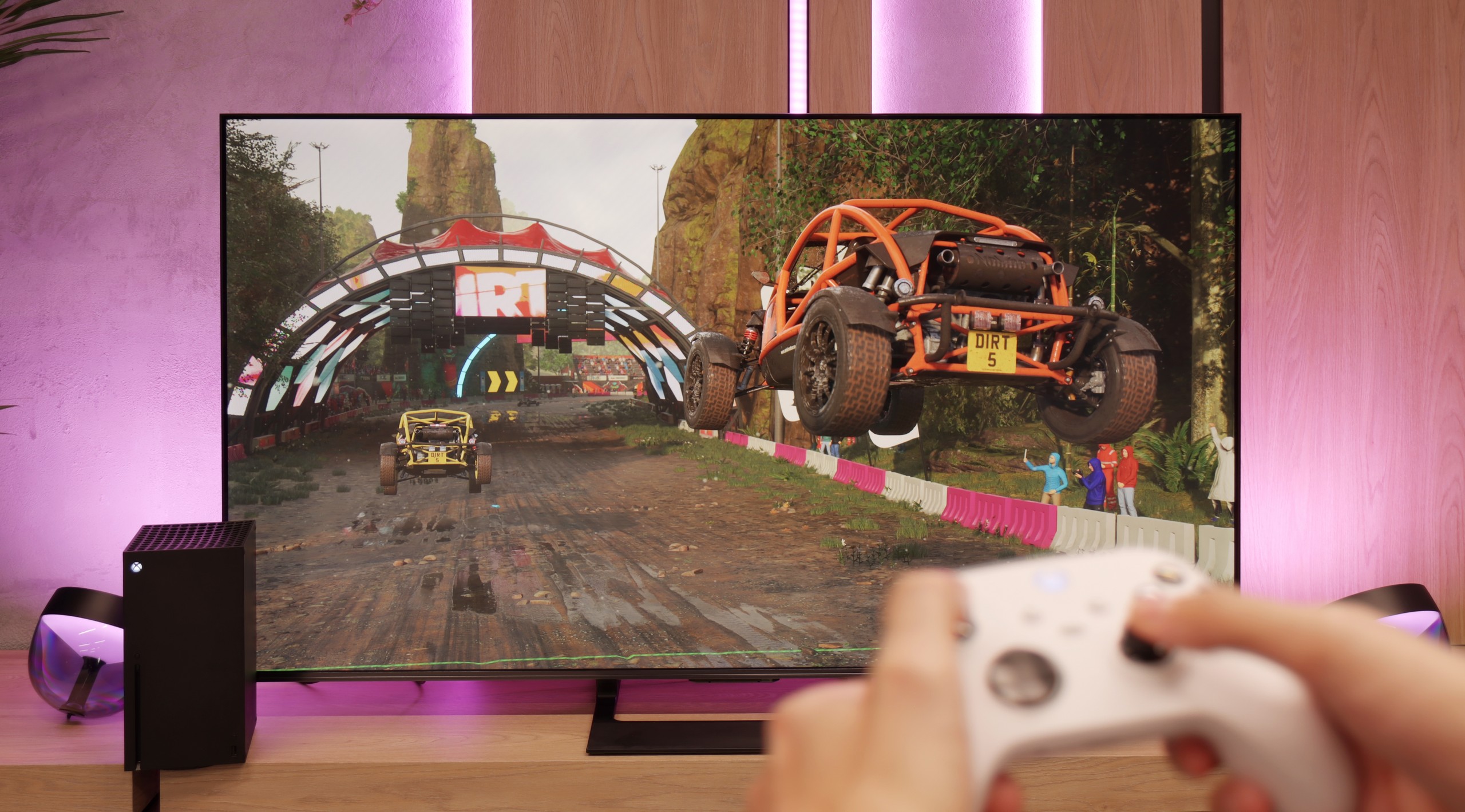
Panasonic is mainly associated with home cinema televisions, but the Z85A demonstrates that it can also step into the gaming world with a really strong impact. This hardware can easily be called a gaming beast – it has everything needed for comfortable gameplay.
Although there are only two HDMI 2.1 ports, both operate at full bandwidth, so we can easily connect both a next-gen console and a gaming PC. All key features are supported: ALLM automatically switches the television to game mode, VRR ensures smooth images without stuttering or tearing, and with correctly implemented HGIG and Dolby Vision, HDR games look really good – colours are vivid, details are sharp, and dark scenes are clear. We also find a Game Bar in the form of a clear, circular menu. It may not look as impressive as the competition's, but it is intuitive and contains all the important settings we would like to have at hand during gameplay.
In summary – the Panasonic Z85A is equipment that truly surprises with its gaming capabilities. It is a television on which both console gamers and PC players will feel at home. It is smooth, dynamic, and simply good.
The Hisense U7Q is a television designed with gamers in mind – and this is immediately evident from its gaming capabilities. It has practically everything you could wish for: variable refresh rate (VRR) – check, automatic game mode (ALLM) – check, and on top of that, high refresh rates of up to 240 Hz in Full HD and support for various resolutions, not just 4K. This is truly a great set of features that makes the U7Q perform well both in fast-paced first-person shooters on consoles and in more demanding titles on PC. Of course – as with most Hisense models – there is a lack of proper implementation of the HGiG feature. It's a shame because HGiG allows console brightness to be matched to a specific television, which in practice makes displaying HDR games according to the creators' intent much easier. Without this, you simply have to reckon with certain limitations in the final HDR image in games.
Input lag
10/10
9.7/10
SDR
HDR
Dolby Vision
Since the Panasonic Z85A has also been designed with gamers in mind, the input lag had to be refined here. And indeed – the results are truly excellent. At 120 Hz, the lag is only 5 ms, and at 60 Hz, it is 13 ms. These are values that will satisfy even the most demanding gamers, whether we are talking about fast-paced shooters or precise fighting games. The responses to our movements with the controller are practically instantaneous, and the gameplay is smooth and responsive. Importantly, the Dolby Vision mode also works flawlessly here. Just a few years ago, using Dolby Vision in games often resulted in high input lag, but in the Z85A, this problem has been effectively eliminated.
The input lag on the U7Q is really impressive. With 120 Hz content, we measured around 9 ms, and with 60 Hz – around 17 ms. These are exceptional results that make the television excellent for even dynamic games requiring quick reactions. It's hard to criticise anything here. Of course, as is often the case, the Dolby Vision mode in games seems to be a bit slower compared to classic SDR or HDR. This will be particularly noticeable for users of Xbox Series X/S consoles, which are the only ones supporting Dolby Vision Gaming. Fortunately, the input lag remains below 30 ms, so in practice, this is still an acceptable level even for more demanding gamers.
Compatibility with PC
7.6/10
8.6/10

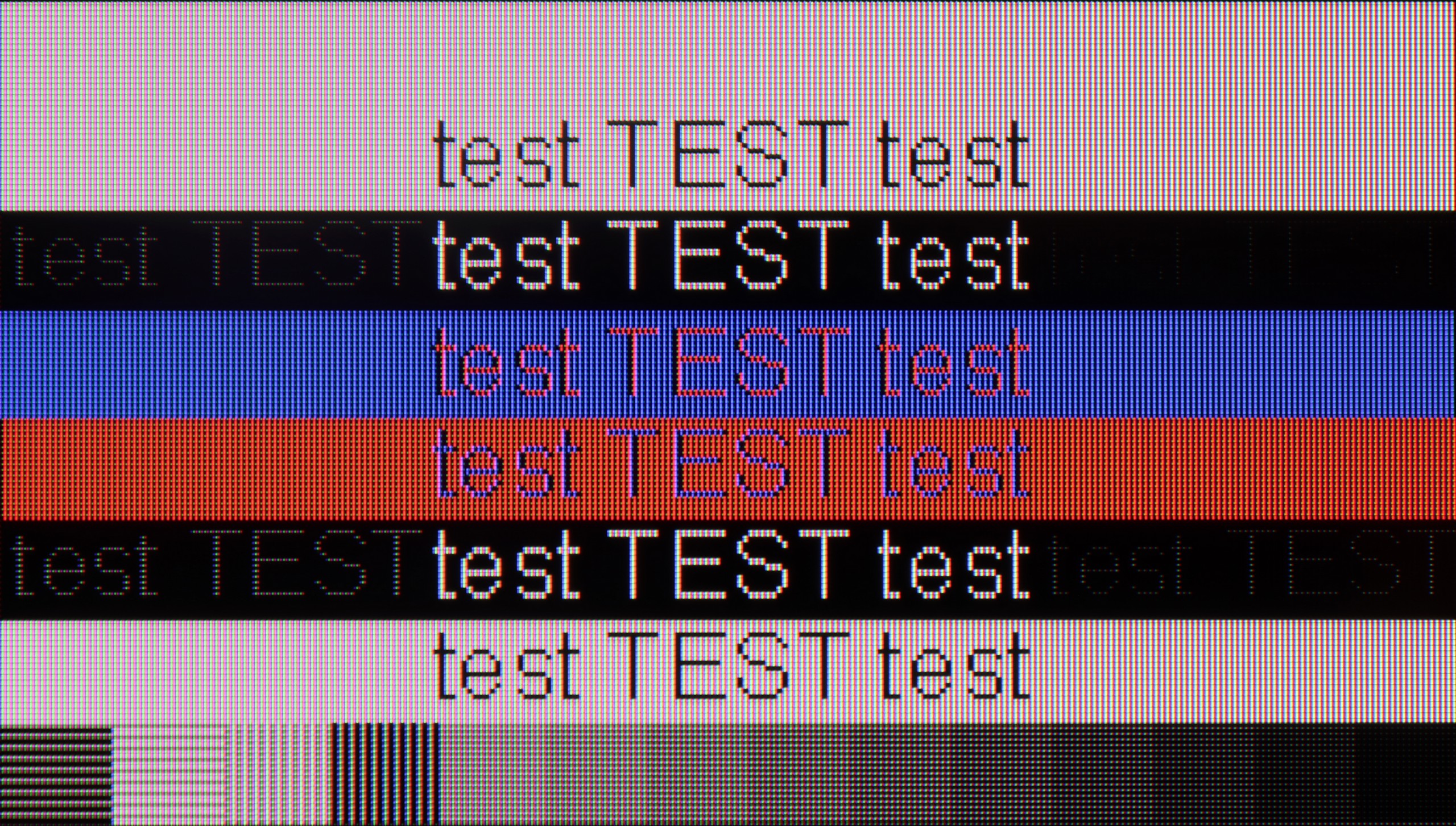
Using the Panasonic Z85A as a computer monitor performs really well. The text is readable and clear, making it easy to browse websites or work with documents. However, one must keep in mind certain limitations of the WOLED panel – the distinctive way it displays fonts may hinder more demanding users, especially those who spend long hours working with text. In terms of gaming on PC, the television performs just as well as with a console. Low input lag, a 120 Hz refresh rate, and proper implementation of G-Sync and FreeSync ensure a smooth and responsive image without annoying stutters or frame tearing.
The U7Q communicates excellently with the computer. For gamers, this is great news – we have high refresh rates, low input lag, and G-SYNC support, making gameplay from a PC pure enjoyment. But the U7Q also performs well in everyday tasks. If someone uses the computer for word processing, browsing the internet, or office work – there’s nothing to complain about. The TV correctly handles chroma 4:4:4, so fonts look sharp and clear, without blurriness or odd contours. Both small and capital letters are simply readable – just as it should be.
Viewing angles
7.4/10
3/10
The viewing angles on the Panasonic Z85A are really good – after all, it's OLED. Whether we're looking at the screen straight on or at a steep angle, the colours remain vibrant, and the contrast hardly loses quality. Of course, the Z85A is somewhat outperformed by televisions with MLA micro-lenses or Samsung's QD-OLED panels, which currently set the highest standard in this regard. However, the differences are subtle enough that most users won't notice them during everyday viewing.
The viewing angles on the U7Q are rather poor – this is simply characteristic of VA panel qualities. Directly in front, everything looks very good: blacks are deep, colours are saturated, and contrast is high. However, just moving slightly to the side causes the picture to start losing quality – colours become washed out, and blacks begin to resemble dark grey. Compared to televisions with IPS panels, the U7Q performs worse, although on the other hand, it makes up for it with better contrast and deeper blacks.
TV efficiency during daytime
4.8/10
6.2/10

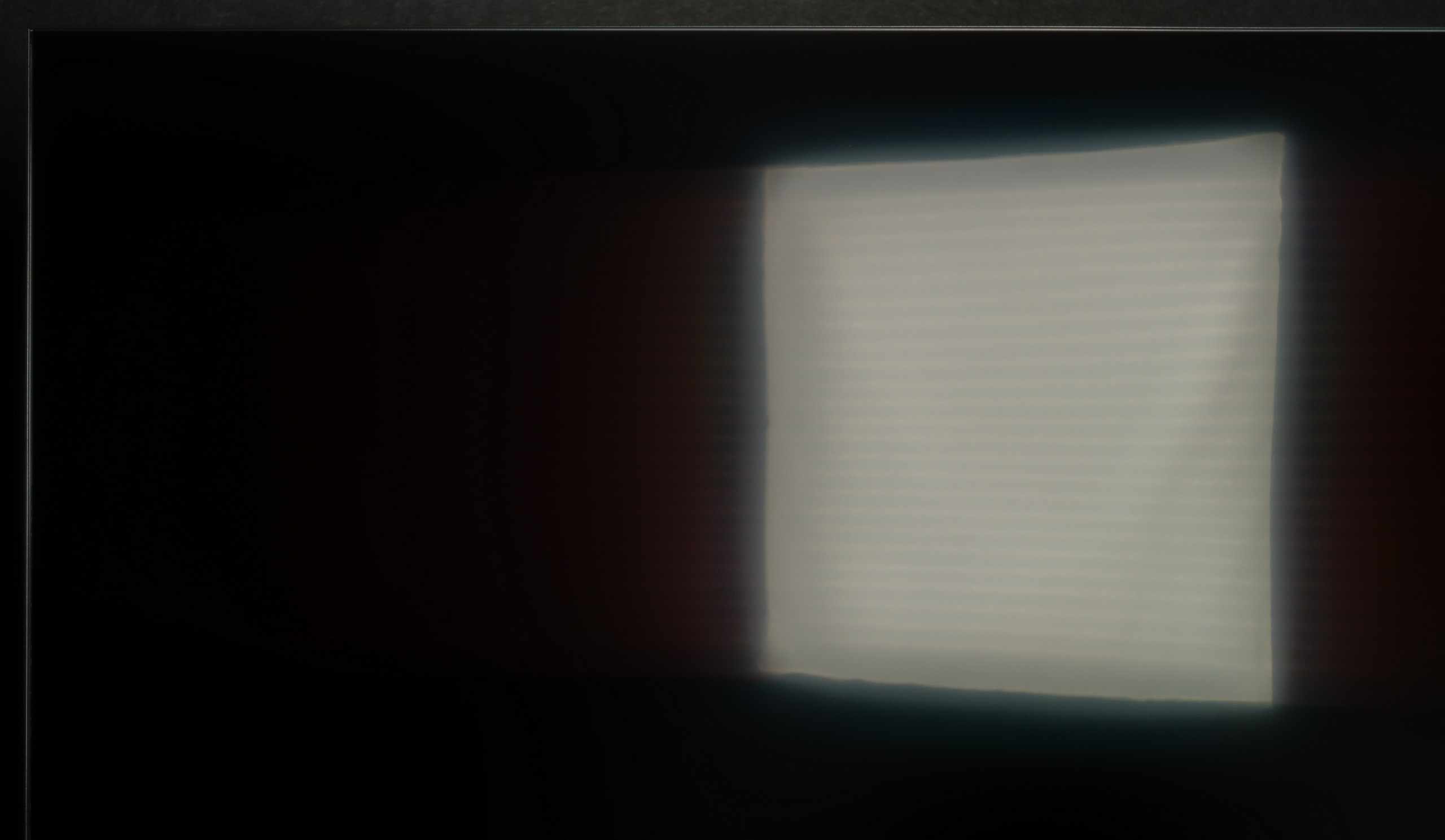

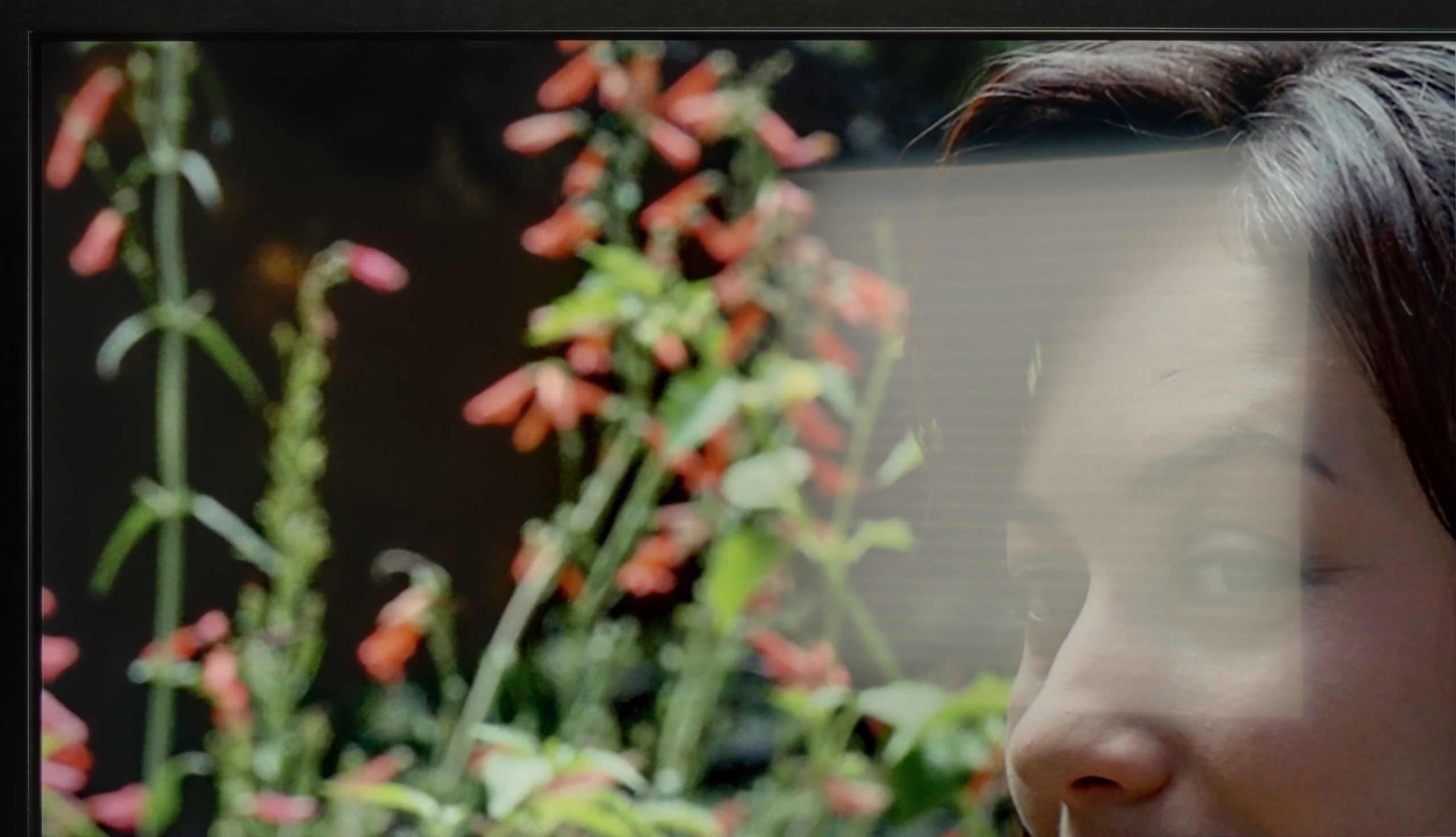
Matrix brightness
Average luminance SDR
Hisense U7Q: 519 cd/m2
Panasonic Z85A: 286 cd/m2
The Panasonic Z85A leaves something to be desired during the day. The panel, despite being matte, moderately suppresses reflections, which can be noticeable in bright rooms. The reflections are not excessively visible, but there is one catch – they take on a bluish tint. In certain situations, especially in strong daylight, this can be slightly annoying and distract from the content on the screen. Additionally, the maximum brightness is just under 280 cd/m². That simply isn't enough to comfortably watch television in a brightly lit room. If we are planning a viewing in the middle of a sunny day, it will be necessary to cover the windows to ensure the image looks good.
The U7Q performs quite well in a sunlit room. The brightness in SDR mode averages around 520 nits, which practically means that even on a sunny day, it is easy to comfortably watch television – without the feeling that everything is drowned in reflections. Additionally, thanks to the satin coating on the panel, the television does a good job of suppressing reflections.
Details about the matrix
Subpixel Structure:

Panel uniformity:

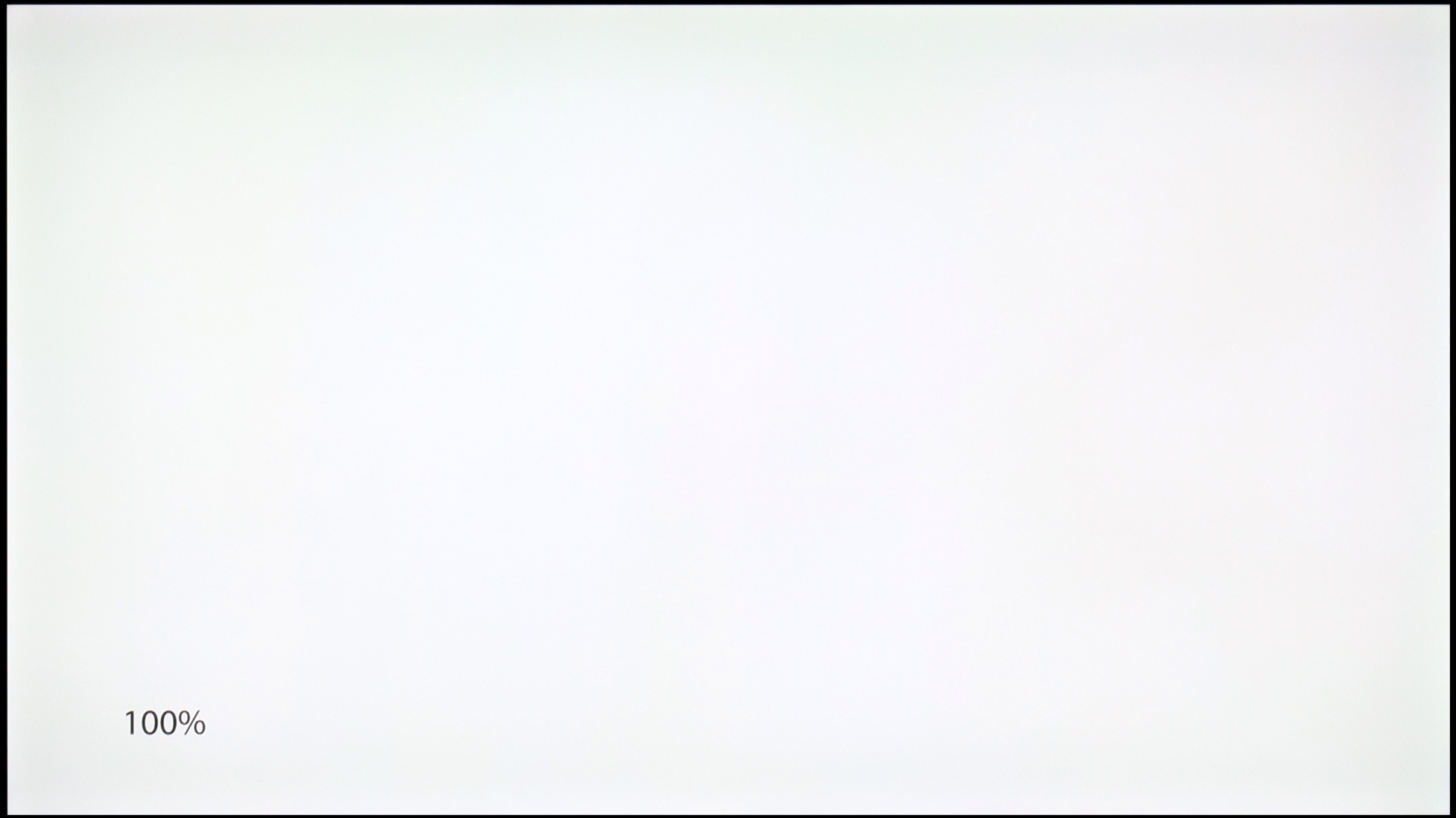
TV features
7.6/10
8.9/10
- HDMI inputs2 x HDMI 2.0, 2 x HDMI 2.1 48Gbps2 x HDMI 2.0, 2 x HDMI 2.1 48Gbps
- Other inputsRCA (Chinch)
- OutputsToslink (Optical audio), eARC (HDMI), ARC (HDMI), Mini-Jack (Headphones)Toslink (Optical audio), eARC (HDMI), ARC (HDMI), Mini-Jack (Headphones)
- Network InterfacesWi-Fi 2.4GHz, Wi-Fi 5GHz, Ethernet (LAN) 100MbpsWi-Fi 2.4GHz, Wi-Fi 5GHz, Ethernet (LAN) 100Mbps
- TV receptionDVB-T, DVB-T2, DVB-S, DVB-S2, DVB-CDVB-T, DVB-T2, DVB-S, DVB-S2
Classic features:
- Recording to USB (terrestrial TV)
- Recording programming
- Picture in Picture (PiP)
- RF remote control (no need to aim at the screen)
- Backlit remote control
- Teletext
- Audio only mode
- Possibility to connect Bluetooth headphones to the TV
- Possibility to simultaneously use Bluetooth headphones and the TV speaker
Smart features:
- AirPlay
- Screen mirroring (Windows Miracast)
- Wyszukiwanie głosowe
- Voice search in native language
- Ability to connect a keyboard and mouse


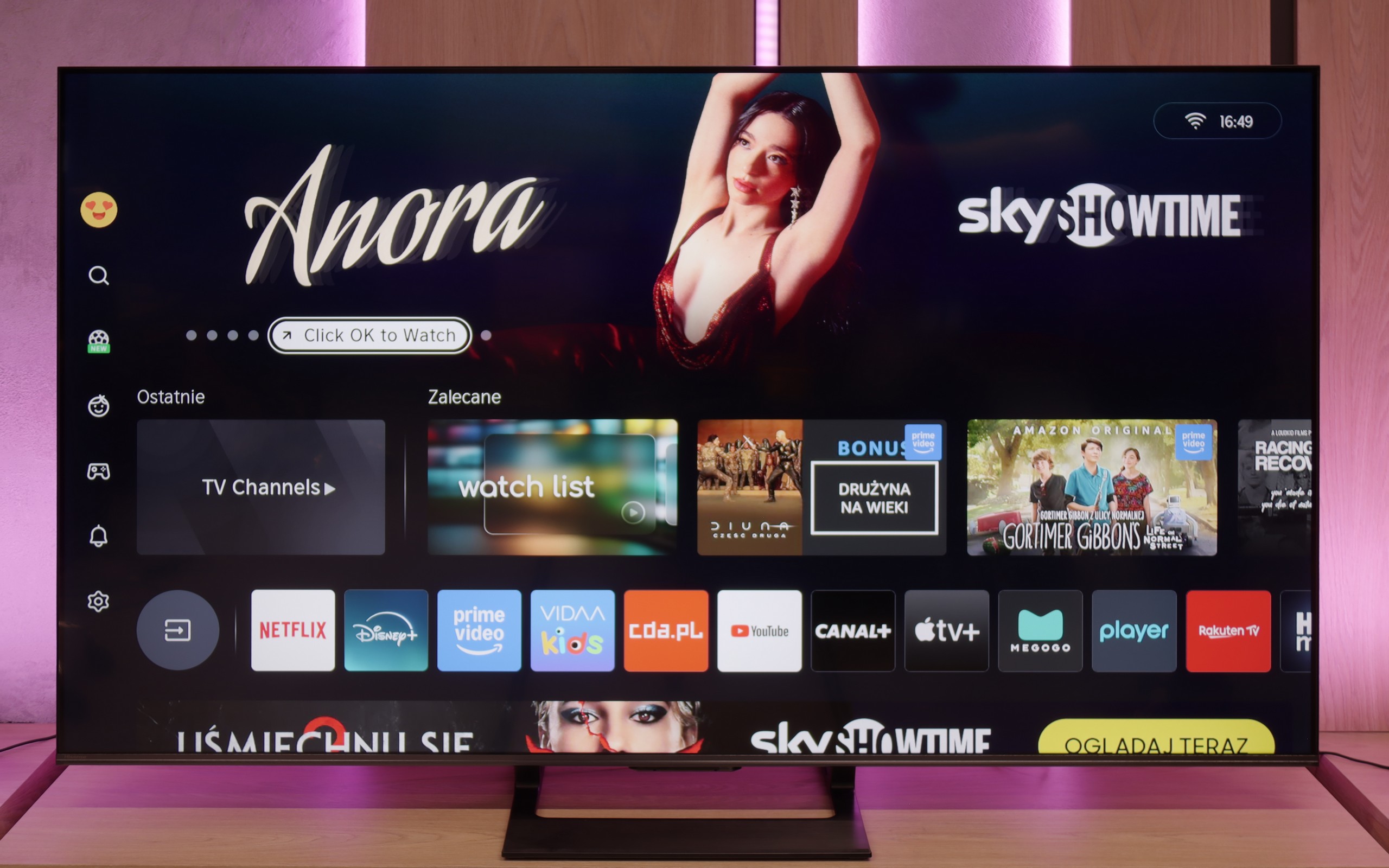

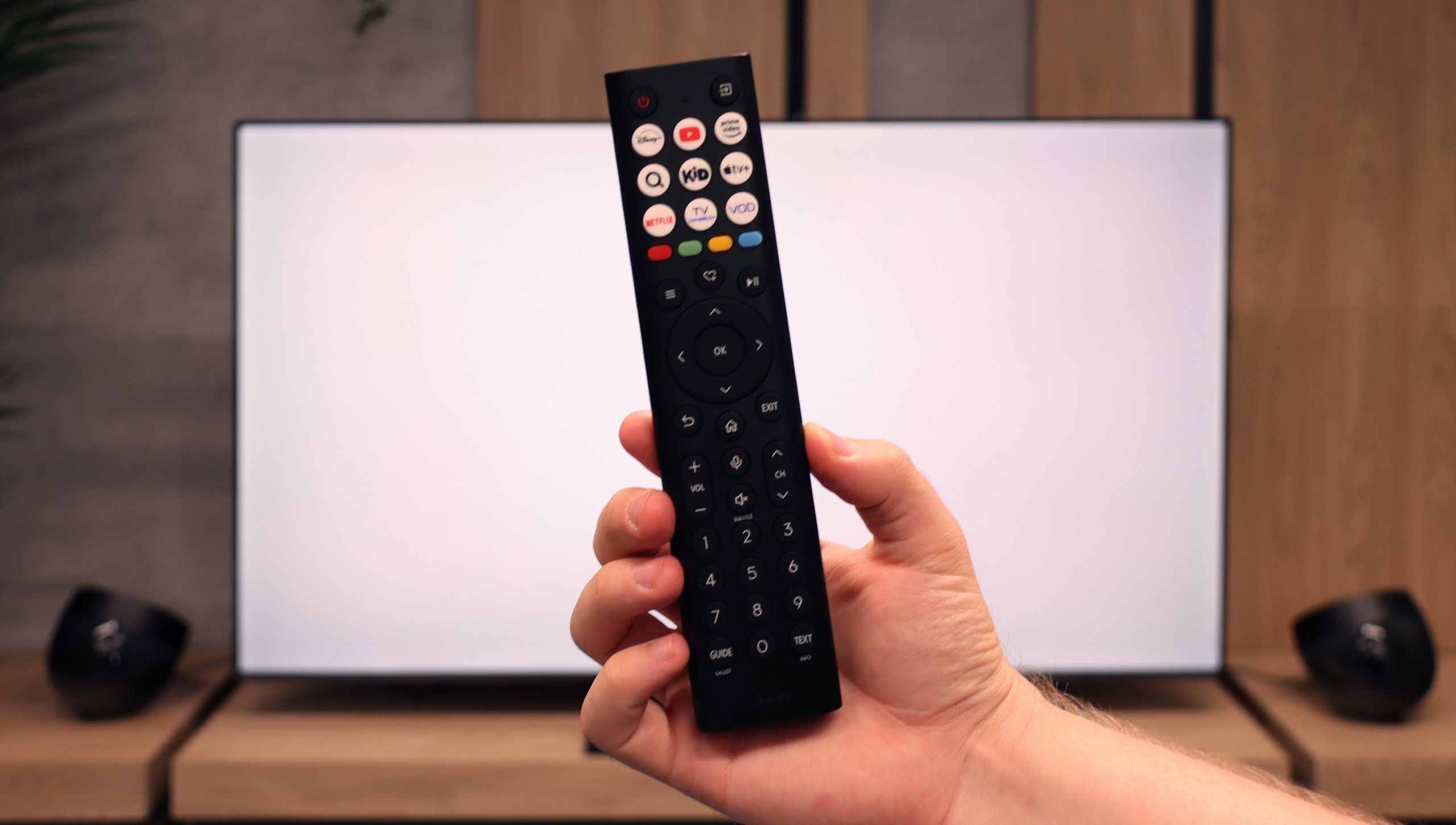
The operating system in the Panasonic Z85A is Amazon Fire TV, which is still a relatively new solution in the Polish market. Until now, we mainly associated it with portable smart devices, and now it is also making its way into televisions – similar to the flagship model Z95A.
On the plus side, it must be noted that the system operates smoothly and responsively. It is also quite intuitive, so navigation does not pose major problems. Unfortunately, when it comes to the availability of applications, it is somewhat lacking. In the Amazon store, we do find icons for popular services such as SkyShowtime, Rakuten, or Viaplay, but… they cannot be downloaded. This is a significant drawback for those who use these platforms daily. Additionally, some functions are poorly translated, which means in certain areas one has to guess what is meant. However, we believe that these are just growing pains, and over time they will be improved – both in terms of translations and application availability.
As for user functions, the situation is much better. The television supports recording to USB and the PiP (picture-in-picture) feature. There is also support for AirPlay, which will surely please users of Apple devices. We also have Bluetooth here, but unfortunately, we cannot connect headphones to it – it only works with keyboards and other control devices. Fortunately, it is possible to connect headphones or a home cinema system via cable, which resolves this issue.
In summary – the Panasonic Z85A offers a solid set of user functions that work well for everyday use. The Amazon Fire TV system is a step in the right direction, especially when compared to Panasonic's old system. However, at this moment, it is difficult to praise it unequivocally. There is potential, but the manufacturer still has a lot of work ahead to ensure everything functions as it should.
Classic features of U7Q
Hisense U7Q has quite a lot to offer when it comes to classic TV features. You can record programmes to USB, connect external devices via Bluetooth without any hassle, and the interface – such as the EPG – is clear and easy to read. It may sound like something mainly appreciated by seniors, but the truth is that U7Q has practically everything needed for watching traditional television. The only thing missing here is the PiP (picture-in-picture) feature.
Smart TV U7Q: Vidaa
As for Smart features, the U7Q runs on the proprietary VIDAA system. And it must be admitted – it operates really smoothly. Voice search in Polish? No complaints. AirPlay and screen mirroring? They work without any issues as well. Of course, one must be aware that VIDAA is a closed system, so – as is often the case – it lacks some popular applications, especially those related to music. Therefore, before purchasing, it is worth checking whether all the applications you use regularly are available.
Playing files from USB
3.1/10
8.2/10
Supported photo formats:
Maximum photo resolution:


In terms of playback of files from USB, the Panasonic Z85A performs rather mediocrely. The built-in media player does handle most popular video formats, but it has one rather significant drawback – it does not support external subtitles. So, if we have older films on the drive or USB stick with separate subtitle files, we must reckon with the fact that the television simply will not display them. This is a considerable disadvantage, especially for those who use their own media libraries instead of streaming services. Of course, this problem can be circumvented by using an external media player (e.g. via a console or Smart TV box), but this is an additional step that could be avoided if the built-in application were better developed.
The built-in player in the U7Q fully meets the needs of most future users. The television handles Polish characters effortlessly and supports most popular video, audio, and image formats. If we had to nitpick, it would only be about the limited support for certain image resolutions – there are instances when files from a camera are not displayed correctly. So it's worth keeping this in mind if you plan to present photos straight from a DSLR or phone.
Apps
7.5/10
7.7/10














































Sound
7.4/10
7.2/10
- Subjective sound quality:7.4/107.2/10
- Dolby Digital Plus 7.1:
- Dolby True HD 7.1:
- Dolby Atmos in Dolby Digital Plus (JOC):
- Dolby Atmos in Dolby True HD:
- DTS:X in DTS-HD MA:
- DTS-HD Master Audio:
In terms of sound, the Panasonic Z85A is pleasantly surprising. The television delivers a pleasant and clear sound, and it can also generate a noticeable bass, which adds depth to both films and music. The surround effect is also quite well reproduced, making watching films or playing games more immersive. Unfortunately, there is one "but". The television does not support the DTS:X format, which is quite popular among more advanced home cinema systems. Therefore, if we plan to use this sound standard, it will be necessary to connect the audio equipment first to the amplifier or soundbar, and only then to the television.
Sound is one of the bigger advantages of the U7Q. The television sounds really pleasant – there is a slightly noticeable bass, good tone balance, and definitely something more than just for "daily news watching." You can easily play music on it and simply sit back and enjoy the sound – of course in an entertaining form, not an audiophile one 😉. Full support for the most important audio codecs also deserves a big plus, as they worked flawlessly. A small exception is Dolby Atmos in TrueHD version, which didn’t fully play when connected to the home cinema, so if someone uses this format – it’s worth keeping in mind – it might be a software issue.


